articles
Pakistan’s Zero Sum Game – Some Historical Perspectives-1
Published
9 years agoon
By
ihar
Author: Dr. Subroto Gangopadhay
Press Release: http://indiafacts.org/pakistans-zero-sum-game-historical-perspectives-1/
Pakistan and India fought the first Kashmir war between October 1947 and December 1948. At the time of independence, the princely state of Jammu and Kashmir was independently ruled by Maharaja Hari Singh, of the Dogra dynasty. The ruler had the option of remaining independent, joining India or Pakistan. Jammu and Kashmir, demographically had a predominantly a Muslim population, mostly converted during the five centuries of Muslim rule over the region that preceded the hundred years Hindu Dogra rule at the time of independence. Hari Singh was undecided about the path he wanted to choose for his kingdom. The Muslim rebellion soon broke out in Jammu and was the pretext of the Tribal Muslims (Pashtuns from NWFP mostly) and the Pakistani Army to cross over to capture the state. They had begun to run over Hari Singh’s forces. The King appealed to India to respond with military help, and in return signed the formal instrument of accession with India, as required by India, on 26th October, 1947. Indian forces thereafter entered and the protracted battle continued over a year before the formal ceasefire on Jan 1, 1949. At that time, Pakistan had gained significant territory, though India had the majority. At the beginning of the 1947 invasion, the Pakistani forces had advanced without problems before the first resistance at Uri. Pakistan has not halted its campaign since, nor has the theatre of war changed.
Pakistani identification with Caliphate
Pakistan launched Operation Gibraltar in the late summer of 1965. Pakistani Army had a regiment called Azad Kashmir Regimental Force that today is called Azad Kashmir Regiment. The operation was named after Umayyad conquest of Spain, launched from the Port Of Gibraltar in 711. The symbolism has little to do with India or Pakistan’s own history, but refers to the Pakistani State’s identification with the history of the expansion of the Caliphate. In operation Gibraltar, about 30,000 Pakistani troops infiltrated Kashmir as guerilla fighters, confident that their visions of an Islamic Caliphate will resonate with the majority Muslim population of Kashmir and that an open rebellion would lead to Kashmir’s secession. The operation was a spectacular failure, as the Kashmiris had a greater respect and identification with their own history than that of the Arabian Caliphate. This failed operation launched the Indo-Pakistan war of 1965, with a ceasefire, brokered at the UN by USA and USSR. By the time the ceasefire was declared, India had the upper hand in the three weeks, ferocious conflict. The Tashkent declaration of 1966 followed. India lost Prime Minister Lal Bahadur Shastri in Tashkent, a national tragedy that has escaped the period historians. The 1965 conflict was the result of Zulfikar Ali Bhutto’s conviction that after India’s capitulation to the Chinese forces in 1962, Pakistan could inflict a decisive defeat on India. He had successfully persuaded President, Marshall Ayub Khan to his point of view. Ayub Khan referred to the infiltrators as Bhutto’s Mujahids.
Operation Searchlight – Genocide and Rape of Bengalis
Pakistan’s disastrous cultural blindness and rejection of East Pakistan’s due political, executive and economic rights, led to disaffection and desire for cessation. In the 1970 general elections in Pakistan, despite winning 167 of 169 seats in E Pakistan, and hence an absolute Majority in Pakistani Parliament of 313 elected members, ZA Bhutto (People’s Party) and President, Gen Yahya Khan refused Sheikh Mujibur Rehman, his due right of becoming Pakistan’s Prime Minister. Yahya, a personal friend of Nixon, responded by unleashing a pogrom on the rightfully dissenting East Pakistanis. The Punjabi (and West Pakistan) dominated Military were set upon their own countrymen in E Pakistan. Operation Searchlight launched the infamous genocide of Bengalis (selectively targeting Hindus), in which a reported two to three million were slaughtered. Countless women were raped and ten million refugees entered West Bengal, causing enormous hardship to the state and India’s economy. The world remained silent in the face of this humanitarian disaster.
American complicity in Indo-Pak war of 1971
The East Pakistanis in the Pakistan army defected and formed part of the Mukti Bahini that India supported. Indira Gandhi, India’s Prime minister, was rebuffed by the American Administration of Nixon and Kissinger, both of whom personally despised her. When Indira Gandhi visited Washington in November 1971, Nixon made her wait 45 minutes before granting audience, and went on to extend his support to the largest genocide of human beings, since the Jews suffered at the hands of the Nazis. Nixon and Kissinger supported Pakistan, a member of the American led military pact CENTO and SEATO. In July 1971, Henry Kissinger had been to Beijing, where Zhou- En Lai went on record to say that they supported Pakistan and would not sit by idly, if India continued on its course of confrontation. It is also a matter of record that Mr. Kissinger confirmed American Support of Pakistan to the Chinese during this visit. On August 9, 1971, India signed the peace, cooperation and friendship treaty, with the Soviet Union, ending its formal policy of non- alignment.
Pakistan’s policy of naming military operations and missiles after Islamic invaders
For the record, India’s formal entry into the war in 1971 was in response to Pakistan launching Operation Chengiz Khan with attacks on 11 Indian airbases on December 3, 1971. Once again the symbolism of operation Chengiz Khan is unmistakable. Pakistanis indeed have forgotten that it is their forefathers, who suffered slaughter at the hands of the Mongol Invader. Instead, he was their hero, to be emulated, by invading India. This strange thought process also permeates their naming of missile systems after Ghazni, Gauri and so on. Pakistan, to this day psychologically considers itself as the remnant lineage of the ‘glorious invading Islamic armies of antiquity’ that killed their forefathers as well.
As the war unfolded in 1971, the US advanced the 7th Fleet with the largest aircraft carrier in the world- USS Enterprise, with USS King, USS Tripoli, USS Decatur and USS Tartar Sam to threaten the Bay of Bengal, while the British Royal Navy sent its fleet led by EAGLE to threaten India’s West Coast. India was saved due to Soviet Intervention, with their nuclear-armed ships and submarines encircling the American Navy. This also warned off the Chinese, who had been requested by the Nixon administration to move their troops along India’s Northern borders. Britain’s role was nefarious and the UN’s role non-existent.
But, Israel did send arms to India, despite India’s support to Arabs and failure to grant Israel diplomatic recognition until 1992.
Pakistan’s defeat and birth of radical jihadi warriors as state instruments
India’s decisive victory in 1971 and vivisection of Pakistan, was probably the most humiliating event in Pakistan’s history. Pakistani ruling elites seem to have harbored ambitions of creating an Islamic Caliphate with imposition of the Arab language, Arab Culture and Salafist ideology on their own people and advance the same beyond their borders. Imposition of a single foreign identity on Kashmiris, Baluchi’s, Sindhis and Pashtuns, like the Bengalis, is a delusional and destructive idea no different than ISIL’s goal of homogeneity. Imprisonment of Waseem Akhtar, the elected MQM Mayor of Karachi-the largest city and hub of commerce and culture- reflects the disconnect between the people, their choices and their state.
The 1971 war not only failed to bring circumspection, it actually led to greater reinforcement of failed ideas. It spurred the state into creating, nurturing, training, funding and using radical Islamic fundamentalist forces as an active arm of state policy. This was to be formally supported and organized with the help of the United States, determined to displace a Socialist, Soviet leaning regime from Afghanistan, as the seventies transitioned into the eighties. Gen Zia- Ul- Haq, who removed ZA Bhutto, with alleged American Support in 1977, remained the President from 1978 to 1988, where he became a firm ally in eliminating Soviets. This is the period, when the Pakistani ISI and the US oversaw the creation of an international Jihadi force of Taliban and Mujahedeen Warriors, as tools of the American foreign Policy. This was a symbiosis between the world’s most powerful democracy and the world’s most violent fundamentalist force. America and Pakistan were the parents of Taliban and of the development and promotion of Opium and Heroin trade as instruments of foreign policy (which the Taliban had actually opposed). Pakistan became a pawn to American goals of planning the demise of the Soviets. In a quid pro quo, the US allowed promotion of the secession of Kashmir through violent jihadi outfits, which it co-created with the ISI.
Operation Tupac
Once the Soviets withdrew (1988-89) and the USSR officially broke up (December 1991), it became easy to redirect the Jihadis to the Kashmir theater under the new Operation Tupac, which had commenced officially in 1988, under the orders of Zia Ul Haq. Operation Tupac remains in existence to this day with its declared objectives of 1) Disintegrating India 2) Utilizing Spy networks for Sabotage and 3) Using the loose borders with Nepal and Bangladesh to set up bases and conduct operations. Operation Tupac has had great success in comparison to the failed Operation Gibraltar. It is also worth noting that the escalating Khalistan Movement that reached a peak in India in the 80’s had a Pakistani sponsorship with at least tacit US support. The Government of India had protested US involvement and the backing of Khalistan, in a formal protest, duly denied by George Bush Senior, US Vice president in 1984, during his India visit.
Conclusions:
* Pakistan’s policy on Kashmir is a publicly declared state policy, e.g. Operation Tupac. Covert and overt means have been used for more than 50 years and shall continue.
* Trying to prove Pakistan’s complicity in every attack is both redundant and self-defeating given the declared Pakistani policy seeking India’s disintegration.
*The incessant efforts to present evidence to the world makes India looks weak to the very powers that were complicit in letting this happen. It also offers a plausible deniability to Pakistan, which has never hidden its policy goals from the world. India’s interest in stirring debate is a poor cover for unwillingness to have a clear policy of response.
*The media, politicians and interlocutors of India have chosen to mislead their own country into a make-believe world of political solutions, peace and bonhomie through shared culture. They have deliberately obliterated the obvious history between India and Pakistan, since partition.
*To the amusement of the Pakistani Establishment, India stills coddles a culture, which the ruling Military- Jihadi elite in Pakistan, has proscribed for its own country. Officially, Pakistan has chosen to enforce an Arabic monoculture of language (Urdu), dress and theocratic dogma on its own citizens .The Baluchistan freedom struggle, the disaffection of Sindhis and Pashtuns are a testimony to Pakistan’s vision for itself. The creation of Bangladesh is testimony to the same.
* Why India’s left, secular intelligentsia, cultural vanguards, and political parties fail to digest a fairly compulsive set of simple historical facts remains unknown.
Photo credit: Nimblefoundation.org
Disclaimer: The facts and opinions expressed within this article are the personal opinions of the author. IndiaFacts does not assume any responsibility or liability for the accuracy, completeness, suitability, or validity of any information in this article.
You may like
articles
Team IHAR at the AMI Festival held in the Indian Museum, Kolkata
Published
5 days agoon
December 9, 2025By
Suprabho Roy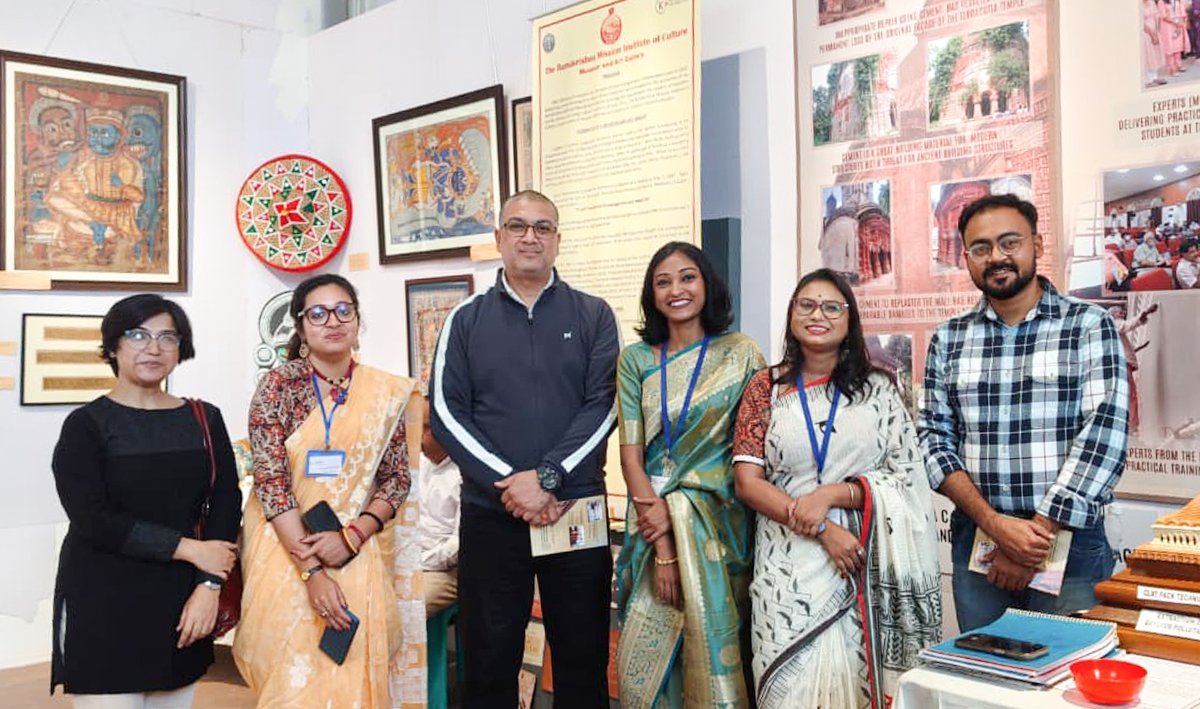
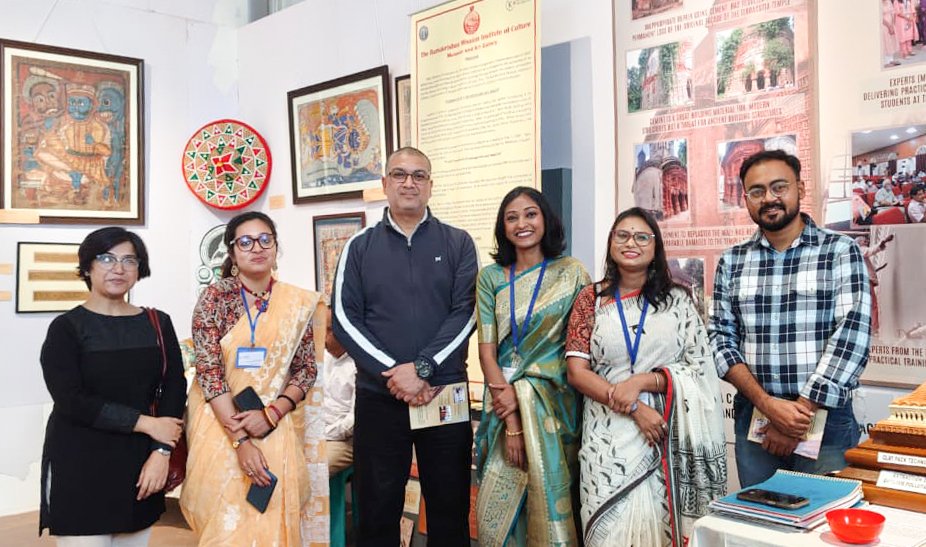
The AMI Festival at the Indian Museum, Kolkata beautifully brings rural India into the heart of the city. Walking through the exhibition feels like stepping into a living archive of village life — from terracotta traditions and folk paintings to everyday tools, stories, and songs that have shaped generations.
Curated with warmth and sincerity, the festival creates a shared space where artisans, researchers, museum professionals, and visitors connect deeply with India’s rural heritage. Here, heritage isn’t just displayed — it is felt, heard, and celebrated.
Every object carries a community’s memory, every performance echoes the rhythm of village life, and every exchange bridges the distance between our rural roots and the urban world.
This year, IHAR proudly participated with three representatives.
Our member Mouli Roy collaborated from Devalgarh Museum, while Nabanita Ghoshal and Ronita Mondal represented Team REACH Foundation, Kolkata, engaging with visitors on the urgent need to conserve historic buildings and safeguard cultural heritage.
Adding to this spirit of collaboration, IHAR Director-Operations Sri Surya Sarathi Roy and IHAR Digital Media Incharge Suprabho Roy, accompanied by Suchira Nandi Purkayastha, Journalist, The Times of India, visited the ongoing festival and warmly appreciated the dedicated efforts of our fellow members.
Our presence reinforced a collective message: heritage survives only when communities, institutions, and individuals work together to protect it.
AMI is a powerful reminder that heritage is not a relic of the past —
it is a living, breathing legacy shaped by people, preserved with care, and enriched when shared.
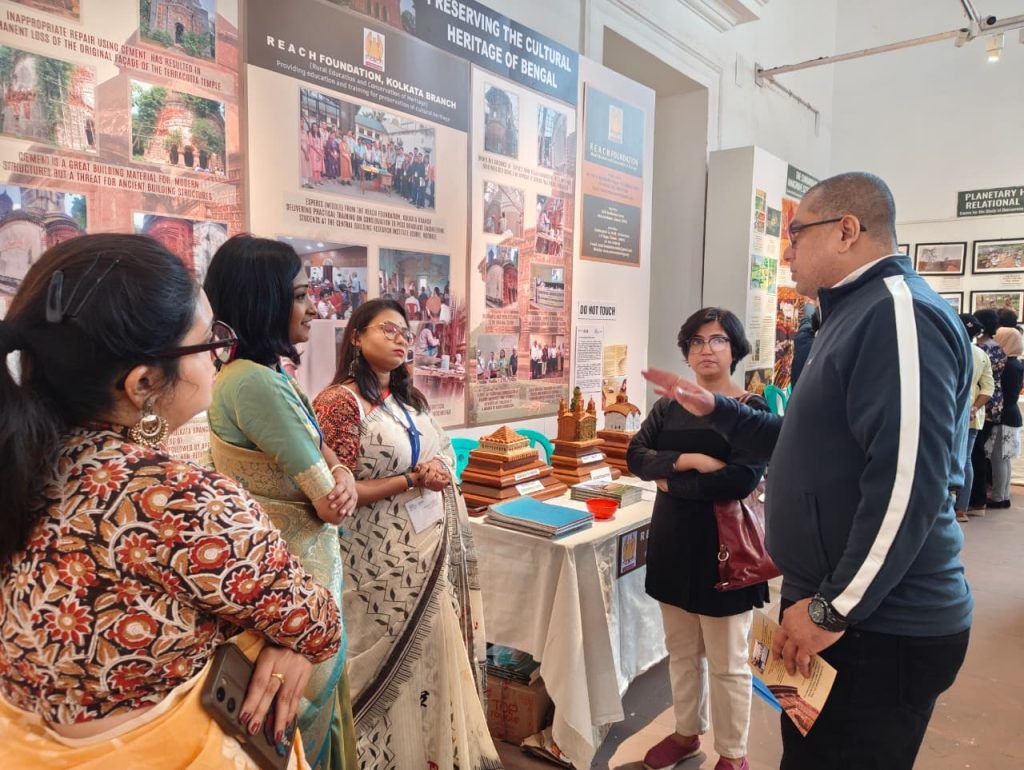
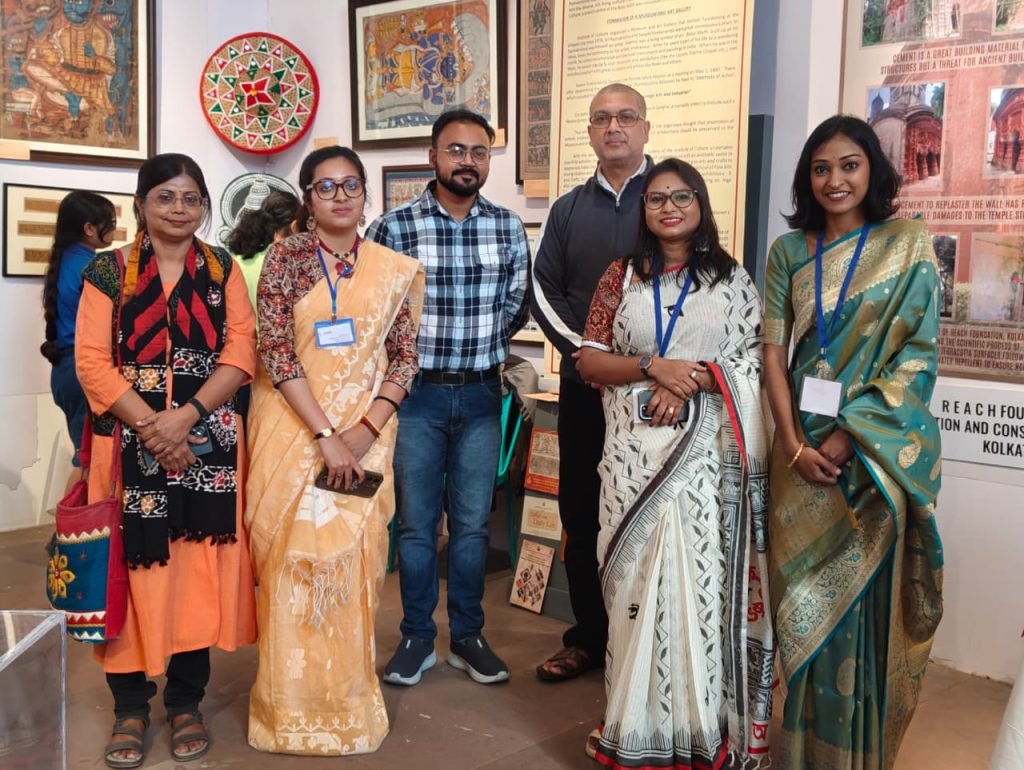
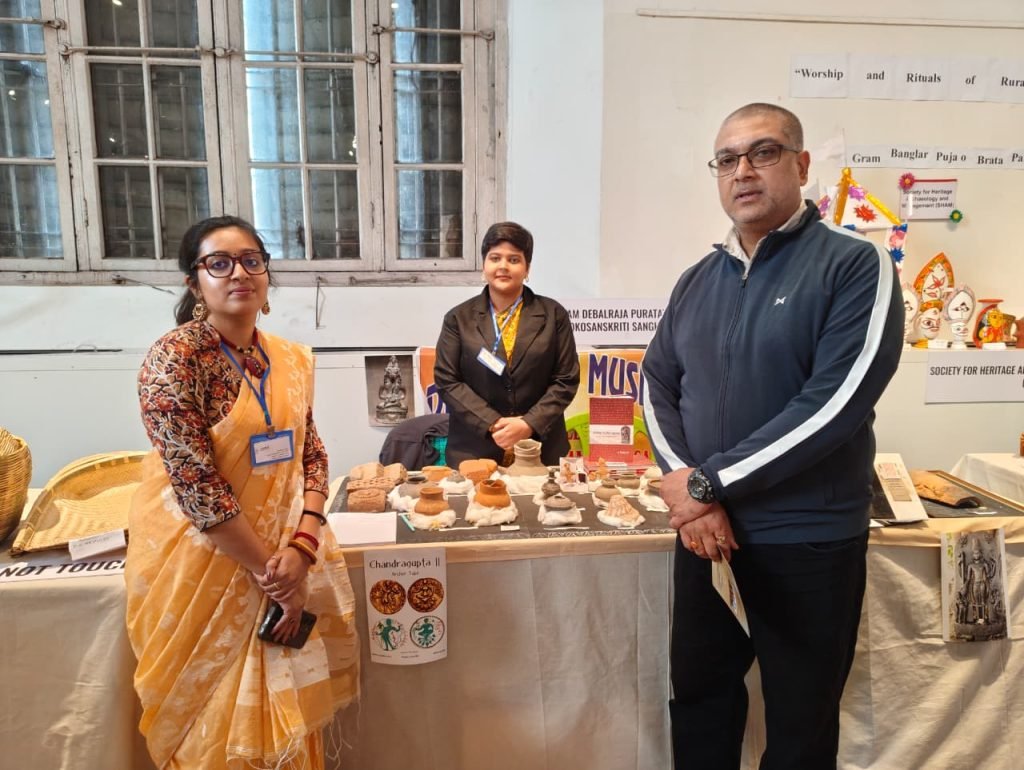
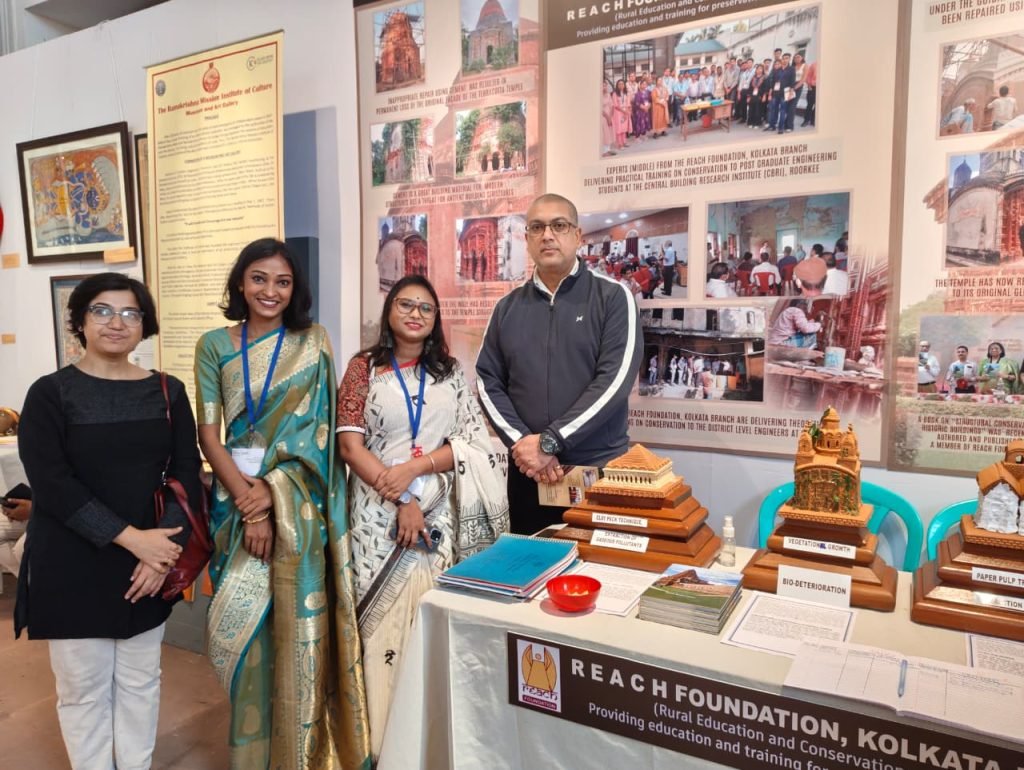
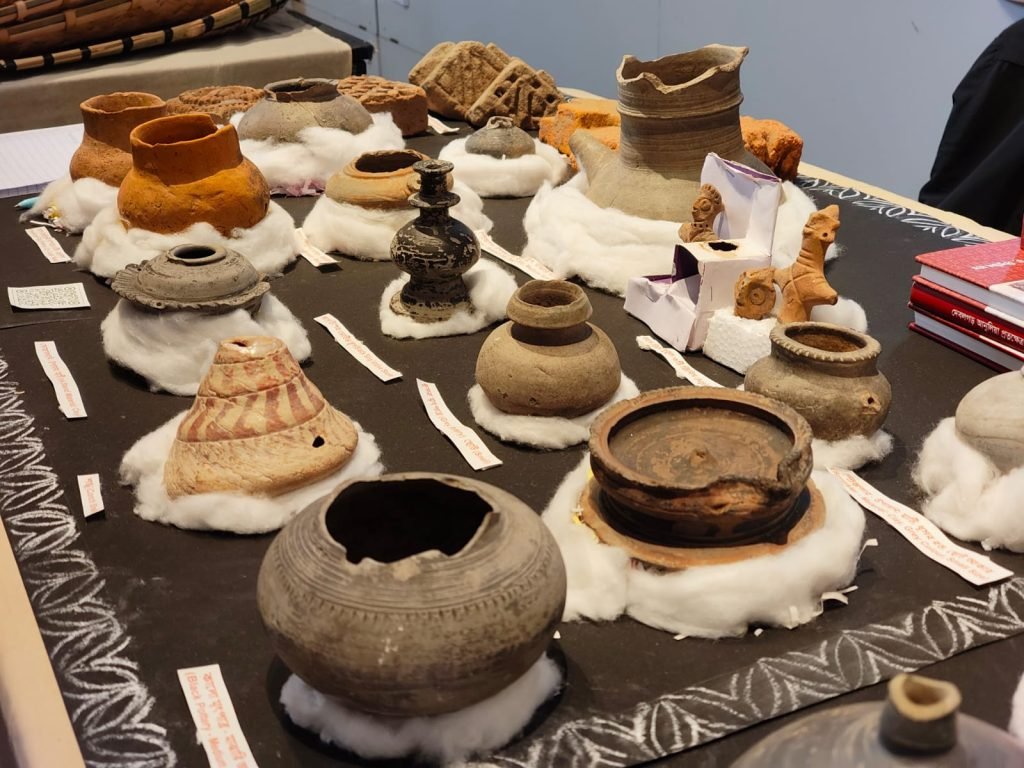
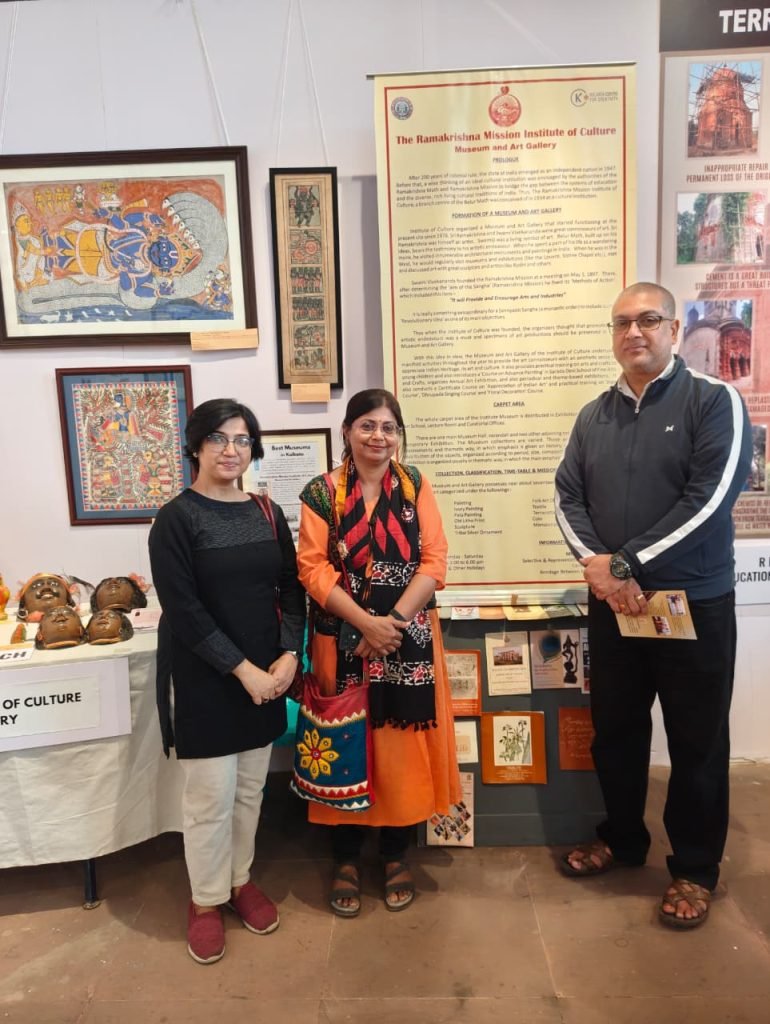
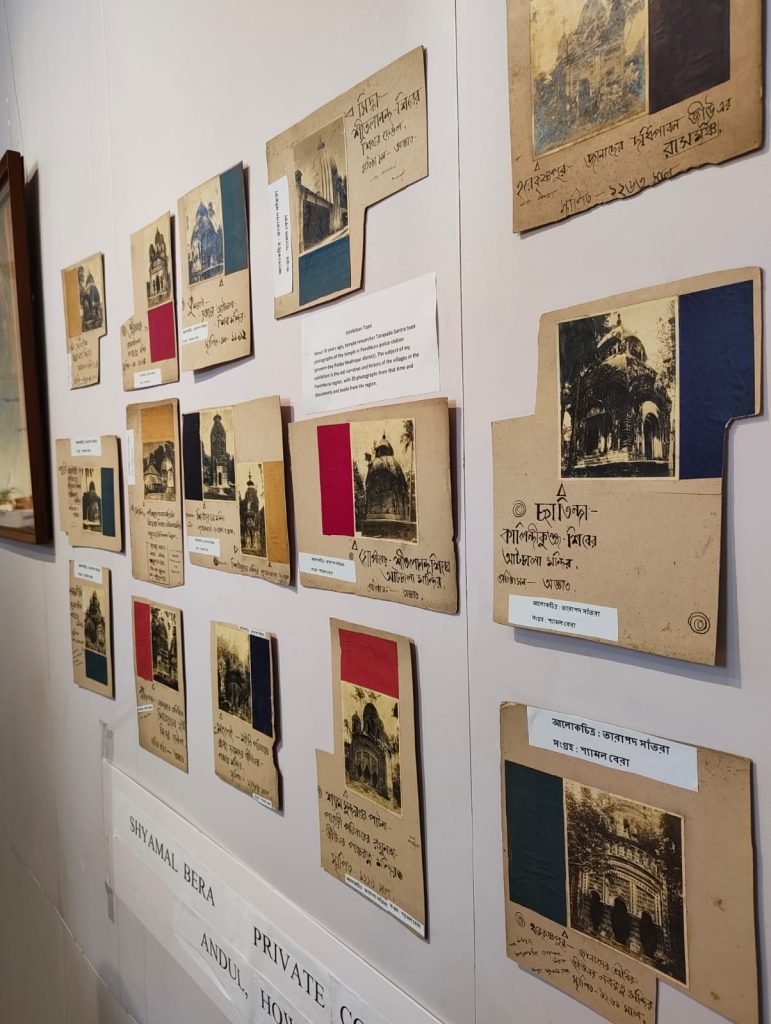
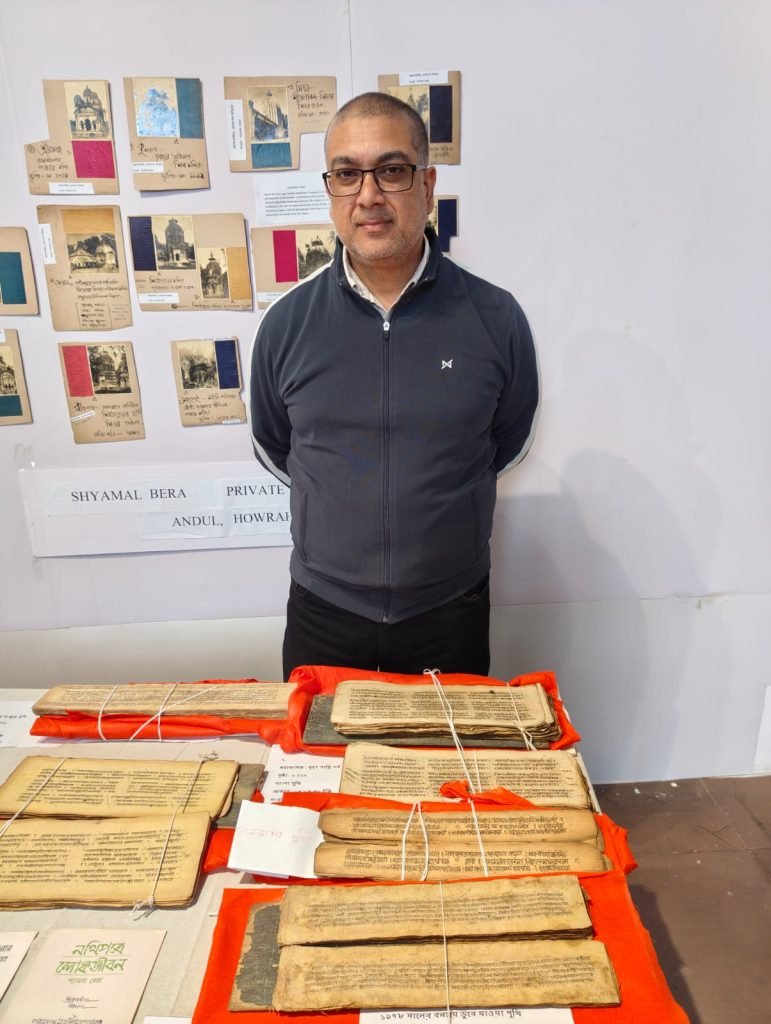
articles
CARVING CONTINUITIES: THE LIVING HERITAGE OF SOAPSTONE ARTISANS
Published
1 month agoon
November 5, 2025By
Suprabho Roy
Soapstone carving is a remarkable craft whose origins stretch back to some of the earliest civilizations in India. Today, this artistic tradition continues among communities whose heritage and skills have been passed down for many generations.
Historical Roots
Soapstone, a metamorphic rock primarily composed of talc, has been used in the Indian subcontinent since the days of the Indus-Saraswati Civilization and the Chalcolithic period. Its historical significance is evident in ancient sites where artifacts such as seals, beads, statues, and small figurines have been found. Key archaeological discoveries, like steatite ringstones from the Shunga-Maurya period and sculptures from the Gupta era, illustrate soapstone’s profound role throughout history. The artistry of temple construction, as seen in Khajuraho, Jabalpur, and Udaipur, is just one facet of the stone’s legacy, with temple artisans employing techniques and tools that are still in use by contemporary soapstone carvers.
Community and Continuity
Carving skills within artisan communities—particularly the Silawat and Vishwakarma—are shared orally and inherited over generations, often spanning four to five generations. Despite the richness of these traditions, written documentation remains scattered and incomplete, making oral testimonies vital in preserving the craft’s continuity. Migration patterns have also contributed to the dispersion and evolution of carving techniques among artisans.
Diversity of Soapstone Craft
The types of sculptures crafted by soapstone artisans are diverse, shaped by regional demands and socio-economic conditions. These range from modern decorative pieces to ritualistic art:
– In Jabalpur (Madhya Pradesh), artisans produce devotional and decorative items such as cookware, toys, and showpieces, with motifs including Shivlings, demigods, elephants, and birds. Soapstone for these works is typically sourced from mines near Bhedaghat.
– The Jhabua-Alirajpur region is known for traditional Gaata sculptures crafted in a relief style, often created in memory of deceased males and worshipped with offerings. Local mines, as well as sources in Gujarat and Rajasthan, supply the necessary soapstone.
– Udaipur’s artisans have adapted to high tourist demand, blending traditional motifs with contemporary designs. Lord Ganesh idols, abstract human figures, and various souvenirs showcase the community’s ability to innovate while maintaining cultural resonance.
Methods and Techniques
Soapstone carving is a collaborative and systematic process :
– Artisans begin with the selection and cutting of raw soapstone using cutters.
– Shaping is performed with hammers and chisels to form the sculpture’s basic structure.
– Fine chisels refine features, while detailing is achieved with pointed tools for intricate patterns.
– Female artisans often smoothen the finished sculptures using sandpaper and water, ensuring a flawless texture.
– Final touches, such as polishing and coloring, are applied with waterproof primers, oil-based substances, or spray paints for gloss and durability.
Cultural Significance and Challenges
The living heritage of soapstone carving continues to hold deep cultural value, maintaining links between the artisans of central and western India since the Bronze Age. Knowledge is primarily transmitted orally, but today faces threats from the rise of mechanization and waning interest among younger generations. Seasonal changes in tourism and market access impact sales, though affordable raw material provides some relief.
The Way Forward
There is an urgent need to recognize, support, and safeguard soapstone artisans to preserve this craft for future generations. Without such efforts, a vital aspect of India’s creative and spiritual history risks fading away. By understanding and promoting the work of these artisans, society can ensure the survival of this unique and profound tradition.
articles
CONSTRUCTING GENDER IDENTITIES IN DEATH : RETHINKING MORTUARY ARCHAEOLOGY THROUGH THE EVIDENCE OF SINAULI
Published
1 month agoon
October 30, 2025By
Suprabho Roy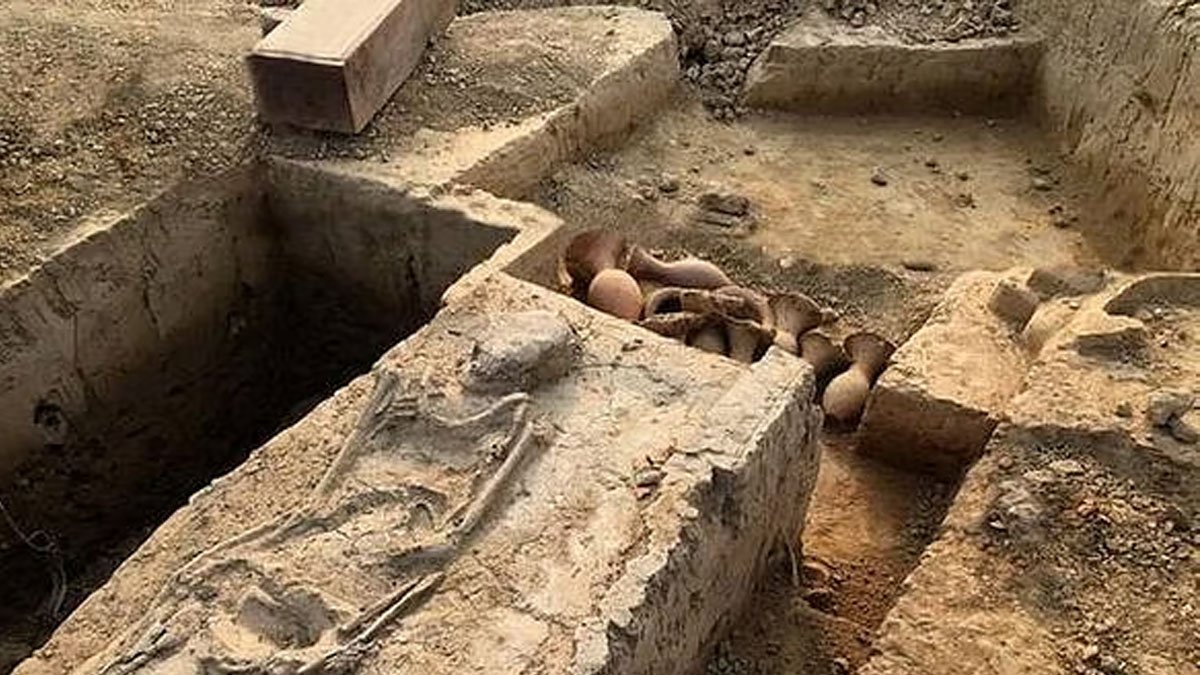
The archaeological site at Sinauli in Uttar Pradesh has provided significant insight into ancient burial practices, gender identities, and social hierarchy in South Asia. The evidence uncovered at Sinauli challenges long-held assumptions and offers fresh perspectives on mortality, gender roles, and elite status in ancient Indian society.
Location and Historical Context
Sinauli is situated in the Baghpat district of western Uttar Pradesh, lying within the fertile Upper Ganga-Yamuna Doab region. It is associated with the Ochre Coloured Pottery (OCP) culture, which dates back to the early second millennium BCE. This site gained attention due to its unique burial practices, especially those involving women and the material assemblages found with their graves.
Overview of Excavations
The Sinauli excavations were initiated in 2005 under archaeologist D.V. Sharma, and further work was conducted in 2018 by Dr. Sanjay Manjul. In 2005, archaeologists uncovered 116 burials, typically oriented north-south, along with ochre-colored pottery. The 2018 excavations revealed even greater complexity, including wooden coffins adorned with copper sheets, rectangular boxes, antenna swords, helmets, shields, pots, and controversial wheeled vehicles—leading to a debate over whether these were chariots or carts.
Types of Burials
Sinauli yielded four primary burial types:
– Symbolic burials without skeletons.
– Primary burials with full skeletons.
– Secondary or fragmented burials.
– Multiple burials containing fragmented remains.
Gender Distinctions in Burial Practices
A significant contribution of Sinauli is its challenge to conventional views on gender and mortuary archaeology. Certain burials, notably those identified by Asko Parpola, show that elite women were sometimes interred in richly decorated coffins with martial symbols such as swords, shields, and wheeled vehicles. Coffins for women featured steatite inlay and were often covered, in contrast to men’s coffins, which generally had copper sheathing and were left uncovered. Such differentiation suggests elaborate symbolism surrounding gender and possibly ritual seclusion or heightened sacredness for women in death.
One highly debated aspect is the absence of feet in Burial-1, which might suggest less earthly mobility or represent a transformation from earthly to transcendent status.
Rethinking Weaponry and Gender
The presence of weapons, such as copper antenna swords and shields, in women’s graves at Sinauli has prompted scholars to reconsider rigid notions of gender roles. These martial objects could signal the dead’s authority—either as warriors or ritual leaders—thus broadening our understanding of gender within ancient funerary contexts. Interestingly, such elaborate martial symbolism is less prevalent in the male burials at Sinauli.
Symbolism of Coffins and Elite Status
Coffins at Sinauli, rare in South Asian archaeology, were more than mere containers; they symbolically transformed the deceased into sacred beings. Their intricate decoration reflects considerable labor, resources, and craftsmanship, indicating elite status and the possibility of gendered authority within the social hierarchy.
Conclusions and Implications
The burial evidence from Sinauli emphasizes material distinctions that reveal social stratification, hierarchy, and constructed gender roles. While the idea of women warriors remains debated, the presence of martial symbols with elite women points towards complex rituals and conceptions of social power in death. Sinauli thus stands out as a crucial site for rethinking gender identities, social class, and the symbolic aspects of funerary practices in ancient India.

Team IHAR at the AMI Festival held in the Indian Museum, Kolkata

CARVING CONTINUITIES: THE LIVING HERITAGE OF SOAPSTONE ARTISANS

CONSTRUCTING GENDER IDENTITIES IN DEATH : RETHINKING MORTUARY ARCHAEOLOGY THROUGH THE EVIDENCE OF SINAULI

Rediscovering Sutanuti: IHAR WB CHAPTER’S Second Heritage Walk

Preserving Bengal’s Intellectual Legacy: IHAR West Bengal Chapter Undertakes Detailed Survey of Uttarpara Joykrishna Mukherjee Public Library

Bharat Varsh – A Cradle of Civilzation – Panel Discussion

Bringing our Gods back home – A Conversation with Shri Vijay Kumar

Panel Discussion on Sati

Bengal’s Glorious and Diverse Heritage- Traditions and Festivals – Panel Discussion

Panel Discussion: Heritage of Firebrand Revolutionaries – Bengal The Seedbed of Revolution

Debugging the wrong historical narratives – Vedveery Arya – Exclusive podcast

The Untold History Of Ancient India – A Scientific Narration

Some new evidence in Veda Shakhas about their Epoch by Shri Mrugendra Vinod ji

West Bengal’s textbooks must reflect true heritage – Sahana Singh at webinar ‘Vision Bengal’

Bringing our Gods back home – A Conversation with Shri Vijay Kumar
Trending
-

 Events2 years ago
Events2 years agoBharat Varsh – A Cradle of Civilzation – Panel Discussion
-

 Videos3 years ago
Videos3 years agoBringing our Gods back home – A Conversation with Shri Vijay Kumar
-

 Videos11 years ago
Videos11 years agoPanel Discussion on Sati
-

 Events8 months ago
Events8 months agoBengal’s Glorious and Diverse Heritage- Traditions and Festivals – Panel Discussion
-

 Events7 months ago
Events7 months agoPanel Discussion: Heritage of Firebrand Revolutionaries – Bengal The Seedbed of Revolution

